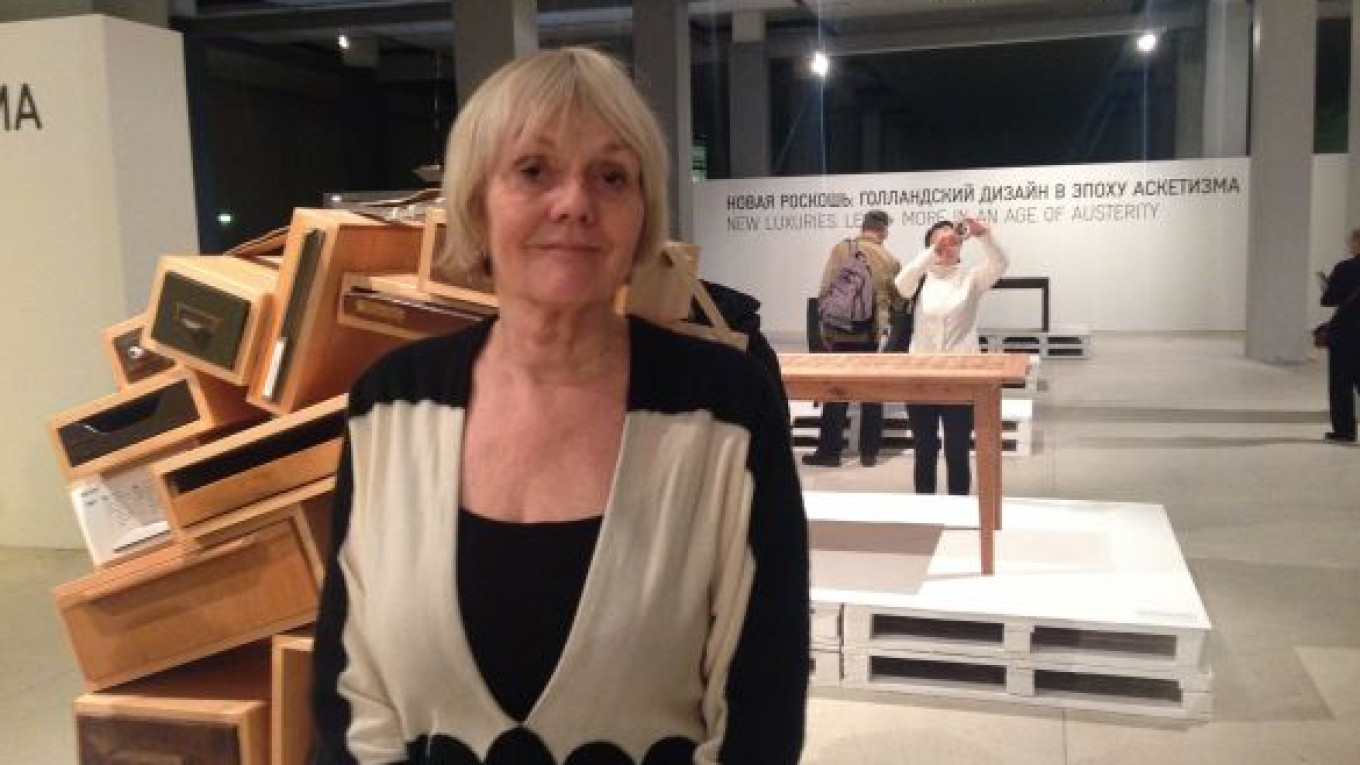Almost 50 pieces from Droog, a Dutch conceptual design studio known for their innovative lifestyle and furniture pieces and household fittings, often made out of found objects, are currently on display at the exhibition "Less and More: New Luxuries in an Age of Austerity."
The event is the first international exhibition organized by the Moscow Design Museum and took more than a year to assemble and produce, museum director Alexandra Sankova said.
She added that there had not yet been a big exhibition in Russia focusing on international design, though she was careful to only select pieces applicable to the Russian experience.
Droog occupies an important place in Dutch design culture, having been founded in 1993 when Dutch design was not very well-known. The studio launched the careers of Marcel Wanders, Richard Hutten, Hella Jongerius and Jurgen Bey and inspired the country's current generation of designers.
Through the use of everyday materials and objects, Droog has redefined the notion of luxury. Though austere, their designs bring together function with beauty, making their objects desirable. Their objects are humorous and not overly engineered, sometimes gimmicky, but certainly interesting.
Dutch design is famous for being functional and utilitarian, owing much to the influence of pre-war artistic movements, post-war modernism and the Swiss international style, but this has often resulted in bland, uniform and dogmatic designs.
Droog instead looks at everyday objects in a creative way, giving them subtle twists. For example, Jurgen Bey's bench (1999) is a fallen tree trunk given a touch of class by the addition of bronze chair backs, while a chandelier made by Rody Graumans (1993), is simply 85 lightbulbs tied together.
Utilitarian objects are given a? hint of? luxury in? tableware for? the 21st century.? From left, glass plates with a? traditional floral motif separated into? 4 layers? — they combine into? one image when stacked, a? 3D-printed napkin holder shaped like a? sixteenth century ruff collar, 3D printed titanium cutlery. (Timothy Misir / MT)
The subject of copying also came up in pieces on show at the exhibition, with Droog's more recent pieces demonstrating an embrace of new design and manufacturing techniques, with many of their items now easily replicable, having been made using 3D printing technology, or with laser etching techniques as opposed to their older pieces, which are often unique, handmade items.
Renny Ramakers, the co-founder of the Droog studio is clearly inspired by the Chinese phenomenon of "shanzhai," or pirated goods, and their tradition of innovative copying. Although poorly manufactured, they often improve on the original product, avoid having to pay expensive license fees to patent holders, and mass produce items so they are affordable to the masses. Once-luxury items are now accessible to the general public and have spawned a culture of innovation.
Ramakers says that the relevance of design is changing in today's world. "There is always context … all our products are reacting to what is happening in design," she says, telling me about the post-fossil era, where materials are too scarce and expensive to use, which the studio is anticipating in their upcoming projects.
Sander Hofstee, a product developer at Studio Droog, adds that their newer pieces show the studio's desire to push the boundaries of these techniques, with the use of uncommon materials and reaching a level of detail that has not been done before.
Less is not always more, but more can indeed be done with less. The exhibition recalled life in the Soviet Union, where despite the uniformity of standardized homes and household fittings and appliances, people made do and made their homes unique where they could through recycling materials and improving on mass-produced objects. The objects on display highlight that there still is room for subjectivity and personal interpretation despite the age of austerity that is beginning to define 21st century living for the most of us.
The exhibition runs from Nov. 13 to Nov. 24 and Dec. 12 to Jan. 1 at The Moscow Design Museum located in the Manezh Gallery, 1 Manezhnaya Square.
See more pictures of the exhibition at our photo gallery.
Contact the author at t.misir@imedia.ru
A Message from The Moscow Times:
Dear readers,
We are facing unprecedented challenges. Russia's Prosecutor General's Office has designated The Moscow Times as an "undesirable" organization, criminalizing our work and putting our staff at risk of prosecution. This follows our earlier unjust labeling as a "foreign agent."
These actions are direct attempts to silence independent journalism in Russia. The authorities claim our work "discredits the decisions of the Russian leadership." We see things differently: we strive to provide accurate, unbiased reporting on Russia.
We, the journalists of The Moscow Times, refuse to be silenced. But to continue our work, we need your help.
Your support, no matter how small, makes a world of difference. If you can, please support us monthly starting from just $2. It's quick to set up, and every contribution makes a significant impact.
By supporting The Moscow Times, you're defending open, independent journalism in the face of repression. Thank you for standing with us.
Remind me later.



